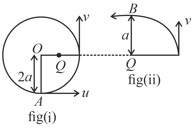A proton and a deuteron are initially at rest and are accelerated through the same potential difference which of the following is false concerning the final properties of the two particles?

Important Questions on Work, Energy and Power
A particle of mass is free to slide on a smooth ring of radius fixed in a vertical plane. The particle is attached to one end of a spring whose other end is fixed the top point of the ring. Initially the particle is at rest at a point of the ring such that , being the centre of the ring. The natural length of the spring is also equal to . After the particle is released and slides down the ring the contact force between the particle & the ring becomes zero when it reaches the lowest position . Determine the force constant of the spring.
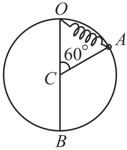
A light string whose mid point is passes through smooth rings and , which are fixed in a horizontal plane distance apart. To each of the points and is attached a mass . Initially is held at rest at (mid point ) and is then set free. What is the distance in meter when comes to instantaneous rest?
(Given )
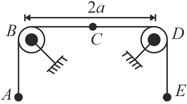
For what minimum value of in for which the block of mass will just leave the contact with surface? (Given: )

A ball of mass is released from position, A inside a fixed wedge with a hemispherical cut of radius as shown in the figure. If the force exerted by the vertical wall on wedge, when the ball is in position , is then find the value of in . (neglect friction everywhere) (Take )
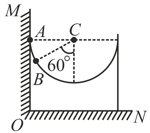
A bead of mass is tied at one end of a spring of spring constant and unstretched length and other end to fixed point . The smooth semicircular wire frame is fixed in vertical plane. Find the normal reaction between bead and wire just before it reaches the lowest point. (Given : )
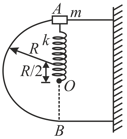
A particle of mass is attached by a light inextensible string of length to a fixed point . When vertically below is given a horizontal velocity as shown figure (i) When open becomes horizontal the string hits a small smooth nail, distant a from and the particle continues to rotates about as centre as shown figure (ii) The particle just describes complete circles about the nail. The value of is
